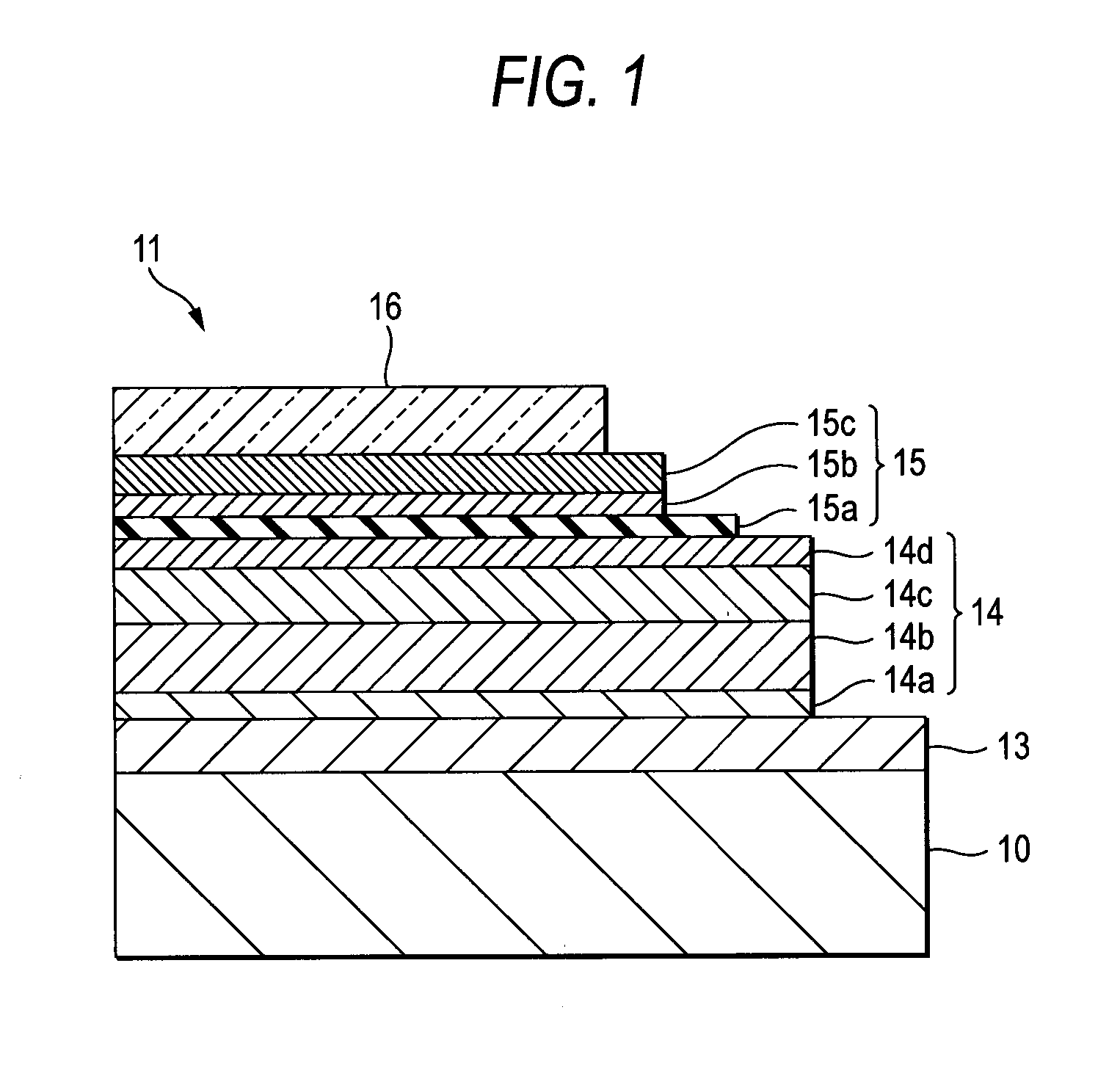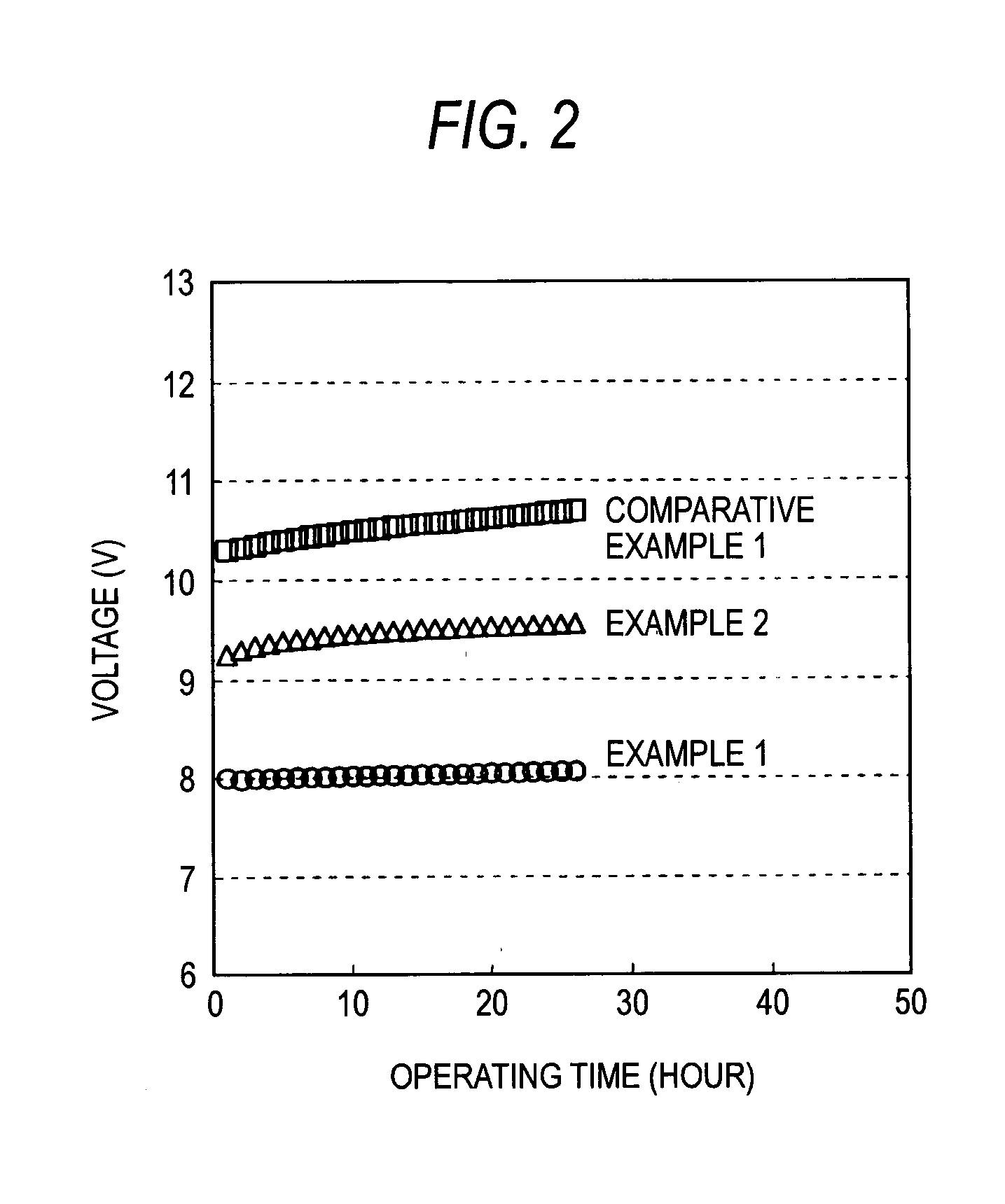Organic electroluminescence device
- Summary
- Abstract
- Description
- Claims
- Application Information
AI Technical Summary
Benefits of technology
Problems solved by technology
Method used
Image
Examples
example 1
[0075] In this example, an organic electroluminescence device in which the electron injection layer 15 has a two-layered structure was manufactured.
[0076] At first, an Ag—Pd—Cu layer was formed on a substrate of a glass plate sized 30 mm×30 mm and an ITO layer was formed thereon to form a lower electrode 13 of a two-layered structure as an anode. Subsequently, a film of SiO2 was formed by sputtering and patterned by lithography to manufacture a cell for use in an organic electroluminescence device masked for a portion other than a 2 mm×2 mm light emission region with an insulative film (not illustrated).
[0077] Then, as the hole injection layer 14a, 2-TNATA (4,4≡,4≡-tris(2-naphtylphenylamino)triphenylaminel was vapor deposited at a film thickness of 15 nm (vapor deposition rate: 0.2 to 0.4 mm / sec).
[0078] Then, an α-NPD (α-naphthyl phenyl diamine) was formed by vapor deposition at film thickness of 15 nm (vapor deposition rate: 0.2 to 0.4 nm / sec) as the hole transporting layer.
[00...
example 2
[0085] An organic electroluminescence device was manufactured in the same manufacturing procedures as those in Example 1 except for forming the protective layer 15c with an Mg—Ag alloy. In the formation of the protective layer 15c, the Mg—Ag alloy was co-vapor deposited to a film thickness of 2 nm at a weight ratio of Mg:Ag=100:5.
example 3
[0086] An organic electroluminescence device was manufactured in the same manufacturing procedures as those in Example 1 except for forming the protective layer 15c as the mixed layer comprising α-NP⊃ and Mg as the hole transporting material. In the formation of the protective layer 15c, the α-NPD-Mg alloy was co-vapor deposited at a film thickness of 5 nm at a weight ratio of α-NPD:Mg=100:5.
PUM
 Login to View More
Login to View More Abstract
Description
Claims
Application Information
 Login to View More
Login to View More - R&D
- Intellectual Property
- Life Sciences
- Materials
- Tech Scout
- Unparalleled Data Quality
- Higher Quality Content
- 60% Fewer Hallucinations
Browse by: Latest US Patents, China's latest patents, Technical Efficacy Thesaurus, Application Domain, Technology Topic, Popular Technical Reports.
© 2025 PatSnap. All rights reserved.Legal|Privacy policy|Modern Slavery Act Transparency Statement|Sitemap|About US| Contact US: help@patsnap.com



